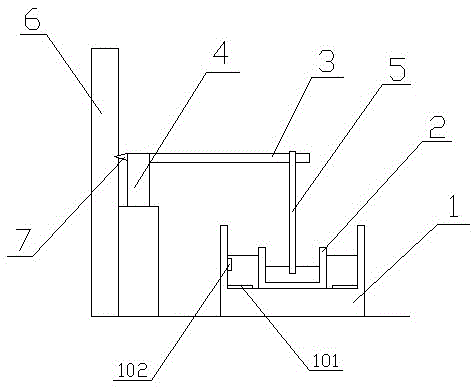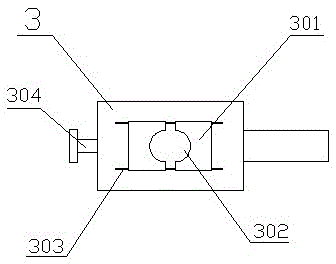An experimental method and device for detecting relative viscosity of phenolic resin
A technology of phenolic resin and relative viscosity, which is applied in the field of experimental methods and devices for detecting the relative viscosity of phenolic resin, which can solve problems such as failure of instruments without viscosity of phenolic resin, quality stability control of phenolic resin, etc., to achieve easy operation, avoid loss, simple effect
- Summary
- Abstract
- Description
- Claims
- Application Information
AI Technical Summary
Problems solved by technology
Method used
Image
Examples
Embodiment Construction
[0021] An experimental method for detecting the relative viscosity of phenolic resin. Take the phenolic resin to be tested and keep it at a specific temperature. Immerse one end of a cylindrical stainless steel rod of a specific specification into the phenolic resin to a certain depth, and keep it for a certain period of time until the liquid level of the resin tends to reach a certain temperature. After flattening, slowly lift the stainless steel rod vertically at a certain rate to separate it from the phenolic resin. Since the phenolic resin adheres to the surface of the stainless steel rod, a resin band will be pulled out as the stainless steel rod is lifted. Record the time when the resin band breaks. The lifting height of the stainless steel rod is used to evaluate the relative viscosity of the detected phenolic resin.
[0022] The entire device and detection need to be carried out at a certain temperature, and the determination of the temperature needs to refer to the act...
PUM
 Login to View More
Login to View More Abstract
Description
Claims
Application Information
 Login to View More
Login to View More - R&D
- Intellectual Property
- Life Sciences
- Materials
- Tech Scout
- Unparalleled Data Quality
- Higher Quality Content
- 60% Fewer Hallucinations
Browse by: Latest US Patents, China's latest patents, Technical Efficacy Thesaurus, Application Domain, Technology Topic, Popular Technical Reports.
© 2025 PatSnap. All rights reserved.Legal|Privacy policy|Modern Slavery Act Transparency Statement|Sitemap|About US| Contact US: help@patsnap.com


